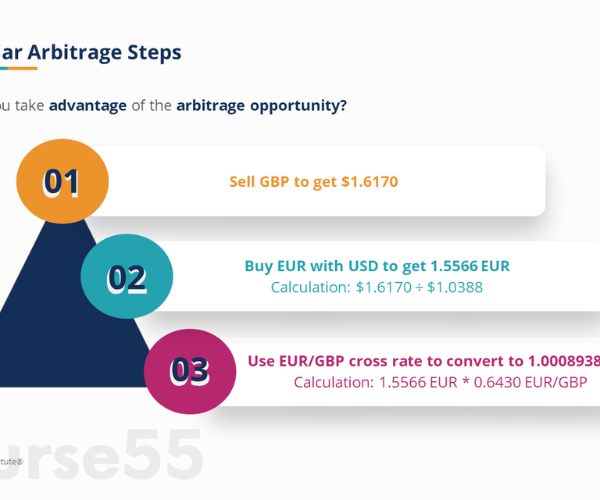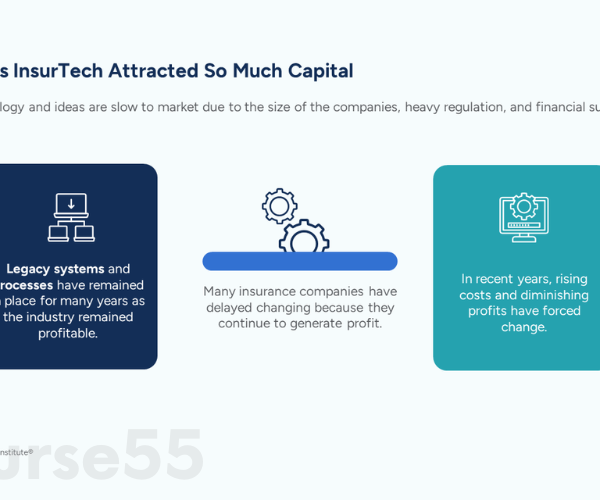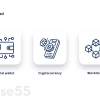Mint Your Own NFT By Andrew Loo – CFI Education
$15.00
Exploring the Process of Minting Your Own NFT
Content proof:
In the rapidly evolving digital landscape, the concept of non-fungible tokens (NFTs) has transcended from mere technological novelty to a significant cultural phenomenon. The book “Mint Your Own NFT” by Andrew Loo serves as a guiding beacon for individuals keen on tapping into this burgeoning arena of digital ownership. Whether you’re an artist looking to tokenize your work or a gamer interested in creating virtual collectibles, the process of minting your own NFT can appear daunting at first glance. However, with the right insights and preparations, anyone can embark on this exciting journey.
This article delves into the essential steps outlined in Andrew Loo’s practical guide, highlighting the nuances and best practices associated with each stage of the NFT creation process.
Conceptualization: The Heart of Creation
Before a digital asset can be minted as an NFT, it is pivotal to undergo the first step: conceptualization. This foundational phase involves identifying the essence of what you wish to create. Are you an artist with a striking piece of digital artwork? Perhaps you’re a musician eager to tokenize your latest track, or a developer with unique in-game items to offer. The beauty of NFTs lies in their diversity; they transform various forms of digital content into unique assets that hold intrinsic value.
During this brainstorming phase, it’s crucial to ponder the unique value proposition of your creation. Unlike traditional assets, NFTs are distinguished by their non-fungibility, meaning each one possesses a distinct worth that is not interchangeable with another. This uniqueness may stem from the creative process, rarity, or the community surrounding it. Artists often compare their journey of conceptualization to planting a seed; while the seed represents the initial idea, the blooming flower symbolizes the fully realized NFT. Just as a gardener nurtures their plants to fruition, creators must enable their ideas to evolve through careful planning and consideration.
Understanding the target audience is another vital aspect of this phase. Consider what resonates with your potential buyers. Conduct research on existing NFT markets and analyze shifts in consumer preferences. This market insight could greatly influence the success of your minting endeavor.
Factors to Consider:
- Type of Digital Asset: Artwork, music, virtual items, etc.
- Unique Value Proposition: Rarity, community impact, emotional resonance.
- Target Audience: Understanding who may be interested in purchasing your NFT.
Choosing the Right Blockchain
Once you have a solid concept, the next essential step in the minting process is choosing a blockchain. While Ethereum remains the most popular choice for minting NFTs, it’s crucial to explore other alternatives like Binance Smart Chain and Tezos, which come with different features and cost implications.
The decision of blockchain can significantly affect the marketability and associated fees of your NFT. Ethereum, known for its robust smart contract functionality, provides a mature ecosystem for NFT transactions. However, high gas fees can deter creators and buyers alike. Here’s a brief comparison of popular blockchains used for NFT minting:
| Blockchain | Transaction Fee | Speed | Ecosystem Strength |
| Ethereum | High | Moderate | Established |
| Binance Smart Chain | Low | Fast | Growing |
| Tezos | Low | Fast | Eco-friendly |
In addition to transaction fees, it’s essential to consider the community and marketplace opportunities available on each blockchain. For instance, Ethereum boasts well-known marketplaces like OpenSea and Rarible, which have robust user bases and extensive features. Meanwhile, platforms on Binance Smart Chain are emerging, offering lower costs but potentially less visibility initially.
Considerations for Blockchain Selection:
- Transaction Fees: How much will it cost to mint and sell your NFTs?
- Speed: How quickly can transactions be processed?
- Ecosystem and Marketplace Access: What platforms are available for showcasing your NFTs?
Setting Up a Digital Wallet
The next step in Andrew Loo’s guide illuminates the importance of a digital wallet in the NFT minting process. A digital wallet, such as MetaMask or Trust Wallet, acts as a safe repository for your cryptocurrencies, enabling you to manage your funds and NFTs seamlessly.
Setting up a digital wallet might seem overwhelming for beginners, but it is a crucial foundation for participating in the NFT marketplace. This wallet will store the cryptocurrency necessary for minting fees and facilitate transactions when buying or selling NFTs. Think of your digital wallet as a safe where you keep not only your valuable cryptocurrencies but also the elaborate creations that represent your digital identity.
Here are a few simple steps to get you started:
- Download the Wallet: Choose a wallet like MetaMask and download it from a trusted source.
- Create an Account: Follow the prompts to set up your account and securely store your recovery phrase.
- Fund Your Wallet: Purchase cryptocurrency (like ETH) through exchanges such as Coinbase or Binance and transfer it to your digital wallet.
Essential Features of Digital Wallets:
- Security: Protect your private keys and assets.
- User-Friendly Interface: Navigate easily through various functionalities.
- Compatibility: Ensure the wallet works well with your chosen blockchain and marketplace.
The Minting Process: Turning Ideas into Assets
Now, having conceptualized your NFT, selected the appropriate blockchain, and set up a digital wallet, you can dive into the core of the minting process. This phase is akin to the grand unveiling of your masterpiece, where creativity meets technology.
The minting process typically involves uploading your digital asset to your chosen NFT marketplace, filling in key details such as title and description, and confirming the minting transaction. Popular marketplaces like OpenSea and Rarible offer straightforward interfaces to facilitate this process.
Once you select your marketplace, be prepared for a few critical steps. First, ensure that your digital asset is in the right format; JPEG and MP3 are commonly accepted formats for images and music, respectively. Secondly, when minting, consider including an engaging description that narrates the story behind the artwork or its significance, extending its appeal to potential buyers.
Key Steps in the Minting Process:
- Upload the Digital Asset: Select your file and upload it to the marketplace.
- Fill in Details: Provide insightful details like title, description, and properties.
- Confirm the Minting Transaction: Review and confirm to initiate the minting.
Marketing and Selling Your NFT
After successfully minting your NFT, the excitement is palpable, yet another critical step looms ahead: marketing and selling. With countless NFTs flooding the marketplace, simply minting an NFT does not guarantee its sale. Engaging potential buyers through effective marketing strategies is essential for standing out from the crowd.
Strategies for marketing your NFT could include leveraging social media platforms such as Twitter, Instagram, and TikTok. These platforms have become hubs for NFT creators and collectors, allowing you to share insights into your creation process, the story behind your digital asset, and engage directly with your audience. Collaborating with influencers in the NFT space might also amplify your reach, creating opportunities to gain traction in a competitive environment.
Moreover, you could explore community engagement through Discord servers and Reddit forums dedicated to NFT discussions. Sharing your work and building a personal brand within these communities fosters authenticity and builds rapport with potential buyers.
Marketing Strategies:
- Social Media Engagement: Leverage platforms like Twitter and Instagram.
- Community Involvement: Participate in discussions on Discord, Reddit, etc.
- Collaborations: Work with influencers or other creators.
Conclusion
Navigating the world of NFTs requires creativity, strategic planning, and relentless perseverance. Andrew Loo’s “Mint Your Own NFT” is indeed a valuable resource for anyone looking to embark on this artistic and entrepreneurial journey. By understanding and executing each step from conceptualization and blockchain selection to minting, marketing, and selling you are equipped to thrive in the NFT marketplace. This growing field not only empowers creators to monetize their talents but also redefines the very notion of ownership in the digital age. As the popularity of NFTs continues to expand, those who take the initiative to learn, adapt, and innovate will lead the charge in this exciting new frontier of creativity and commerce.
Frequently Asked Questions:
Business Model Innovation: We use a group buying strategy that enables participants to share costs and access popular courses at lower prices. This approach helps individuals with limited financial resources, although it may raise concerns among content creators regarding distribution methods.
Legal Considerations: Our operations navigate complex legal issues. While we do not have explicit permission from course creators to resell their content, there are no specific resale restrictions mentioned at the time of purchase. This lack of clarity allows us to offer affordable educational resources.
Quality Control: We guarantee that all course materials provided are identical to those offered directly by the creators. However, please note that we are not official providers. As a result, our services do not include:
– Live coaching calls or sessions with the course author
– Access to exclusive author-controlled groups or portals
– Membership in private forums
– Direct email support from the author or their team
Our goal is to make education more accessible by offering these courses independently, without the additional premium services available through official channels. We appreciate your understanding of our unique approach.
Be the first to review “Mint Your Own NFT By Andrew Loo – CFI Education” Cancel reply
You must be logged in to post a review.



















Reviews
There are no reviews yet.